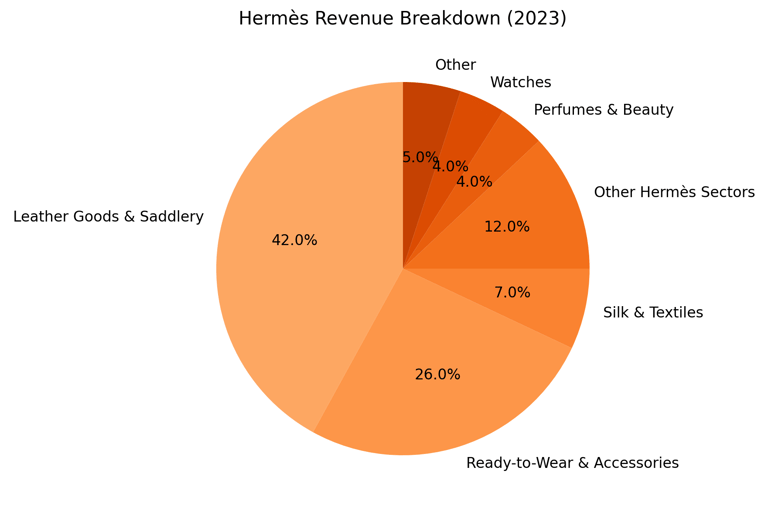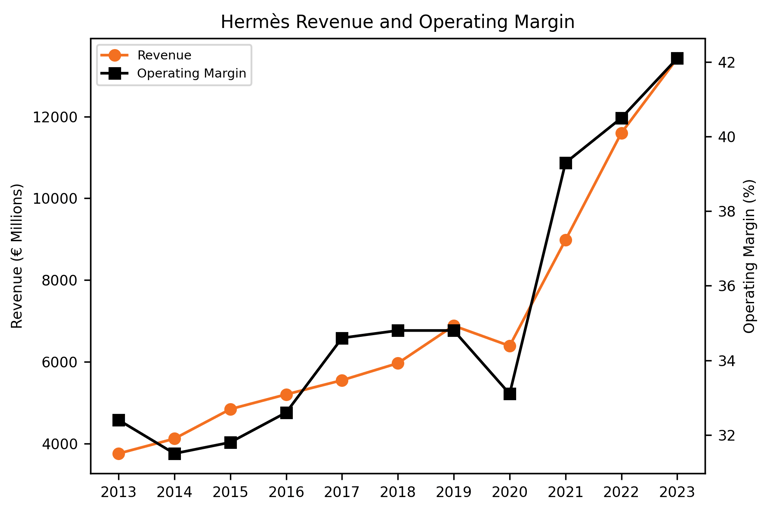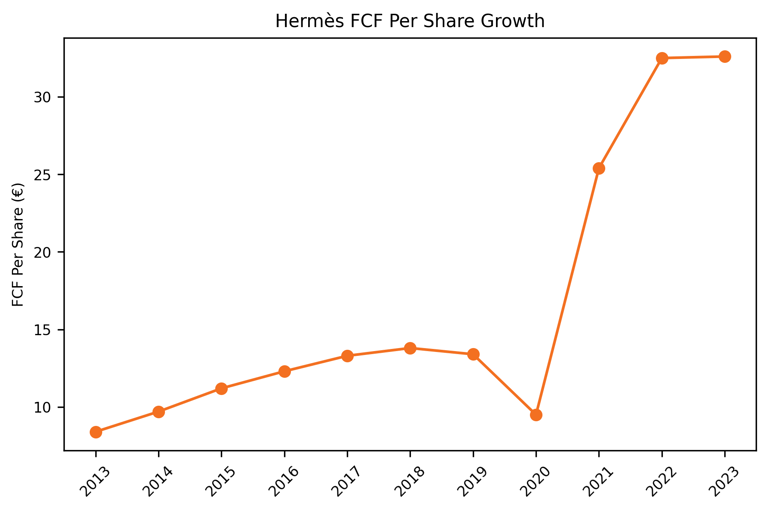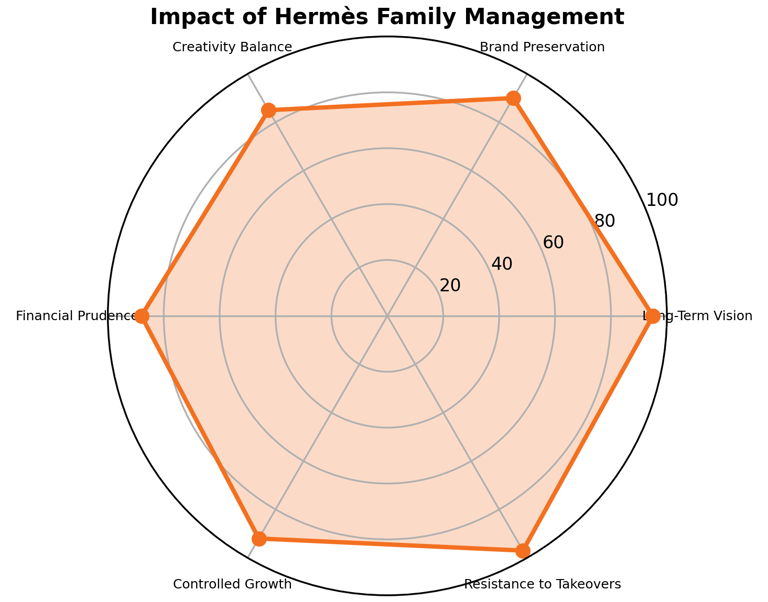Hermès - Making Bags
Analyzing Hermès' enduring brand value and resilience in the luxury goods market
7/22/20246 min read
1. Company Overview and History
Hermès International SCA is a French luxury goods manufacturer established in 1837. Known for its quality, craftsmanship, and exclusivity, Hermès has become one of the world's leading luxury brands. The company started as a harness workshop in Paris and has since evolved into a global luxury powerhouse, famous for its leather goods, ready-to-wear, accessories, perfumes, and other lifestyle products.
2. Business Model and Revenue Streams
Hermès operates on a vertically integrated business model, controlling much of its supply chain and distribution:
Product Creation: In-house designers create products across various categories.
Manufacturing: Majority of products are made in Hermès-owned workshops in France.
Distribution: Products are primarily sold through company-owned stores and a selective wholesale network.
Brand Management: Strict control over brand image and product availability.
Revenue Breakdown (FY 2023):
By Product Category:
Leather Goods and Saddlery: 42%
Ready-to-Wear and Accessories: 26%
Silk and Textiles: 7%
Other Hermès Sectors: 12% (Jewelry, Homeware)
Perfumes and Beauty: 4%
Watches: 4%
Other Products: 5%
By Geographic Area:
Asia-Pacific (ex-Japan): 46%
Europe (ex-France): 17%
France: 9%
Americas: 19%
Japan: 8%
Other: 1%
3. Financial Performance and Key Metrics
Hermès has demonstrated strong and consistent financial performance:
Revenue Growth:
Revenue CAGR (2013-2023): 13.6%
2013 Revenue: €3,755 million
2023 Revenue: €13,427 million
Profitability:
Operating Margin:
2023: 42.1%
2022: 40.5%
2021: 39.3%
2020: 33.1%
Net Profit Margin:
2023: 31.4%
2022: 29.5%
2021: 27.2%
2020: 21.7%
Store Network:
Total Stores (end of 2023): 300
Net Store Openings in 2023: 2
Comparable Store Sales Growth:
2023: 22%
2022: 23%
2021: 42% (rebounding from COVID-19 impact)
2020: -6% (impacted by COVID-19)
Key Financial Metrics (2023):
Return on Assets (ROA): 26.4%
Return on Equity (ROE): 35.8%
Inventory Turnover: 1.08
Debt-to-Equity Ratio: 0.08
Free Cash Flow:
2023: €3,416 million
2022: €3,405 million
CAGR (2013-2023): 14.8%
Key observations:
Consistent Revenue Growth: Hermès has maintained strong revenue growth, even during challenging periods like the COVID-19 pandemic.
Exceptional Profitability: The company's operating and net profit margins are among the highest in the luxury goods industry.
Strong Balance Sheet: Low debt levels and high returns on assets and equity demonstrate financial strength and efficient capital utilization.
Controlled Expansion: Hermès maintains a relatively small store network compared to peers, focusing on exclusivity and high productivity per store.
Resilience: The company showed strong recovery post-COVID, with high comparable store sales growth in 2021 and 2022.
These metrics collectively paint a picture of a highly profitable, well-managed luxury company with a focus on exclusivity and quality over rapid expansion.
4. Competitive Landscape and Differentiation
The luxury goods market is highly competitive, with key players including:
LVMH Group (Louis Vuitton, Dior, etc.)
Kering (Gucci, Saint Laurent, etc.)
Richemont (Cartier, Van Cleef & Arpels, etc.)
Chanel
Hermès differentiates itself through:
Exclusivity: Limited production and long waiting lists for iconic products like the Birkin bag.
Craftsmanship: Strong emphasis on handmade products and artisanal skills.
Heritage: Rich history and brand storytelling.
Vertical Integration: Control over production ensures quality and protects brand image.
Price Positioning: Generally higher price points than many luxury competitors.
Market Position: Hermès is considered one of the most exclusive and desirable luxury brands globally. While its market share in the broader luxury goods market is smaller than conglomerates like LVMH, it commands a significant share in high-end leather goods and is often seen as the pinnacle of luxury.
5. Family Management: A Cornerstone of Hermès' Success
The Hermès family's continued involvement in the company's management is a distinguishing feature that significantly contributes to its success and uniqueness in the luxury goods industry. This family stewardship has several special characteristics:
Long-Term Vision and Heritage Preservation:
The family's management approach prioritizes long-term value creation over short-term profits.
There's a strong emphasis on preserving the company's heritage, craftsmanship, and exclusive brand image.
This long-term focus has allowed Hermès to maintain its position at the pinnacle of luxury, resisting the temptation to over-expand or dilute the brand.
Stability and Consistency:
Family management provides a stable leadership structure, with smooth transitions between generations.
This stability translates into consistent strategic direction and brand messaging over decades.
The current CEO, Axel Dumas, is the sixth-generation family member to lead the company.
Creativity and Innovation Balance:
The family encourages a balance between respecting traditions and embracing innovation.
Artistic direction often comes from family members, ensuring a consistent brand aesthetic while allowing for contemporary interpretations.
Pierre-Alexis Dumas, the Artistic Director, is also a sixth-generation family member.
Resistance to External Pressures:
Family control has allowed Hermès to resist takeover attempts, most notably fending off LVMH's accumulation of shares in 2010-2014.
This independence enables the company to make decisions based on long-term brand value rather than short-term market pressures.
Unique Corporate Culture:
The family's values permeate the corporate culture, emphasizing craftsmanship, quality, and respect for artisans.
This culture helps in attracting and retaining top talent in design and craftsmanship.
The company maintains a more intimate, familial atmosphere compared to larger luxury conglomerates.
Controlled Growth Strategy:
Unlike many publicly traded companies, Hermès under family management has maintained a strategy of controlled, organic growth.
This approach has helped maintain the brand's exclusivity and high margins.
Financial Prudence:
Family management has instilled a culture of financial conservatism, maintaining a strong balance sheet with minimal debt.
This prudence has allowed Hermès to weather economic downturns more effectively than many competitors.
Stakeholder-Oriented Approach:
The family management style considers a broader range of stakeholders beyond just shareholders.
This includes a strong focus on employee welfare, sustainable practices, and community engagement.
Knowledge Transfer Across Generations:
The family's deep involvement ensures that crucial knowledge about the brand, its heritage, and its unique processes are passed down through generations.
This continuity helps in maintaining the essence of Hermès over time.
Alignment of Ownership and Management:
With significant family ownership (through the H51 holding company), there's strong alignment between ownership and management interests.
This alignment reduces agency problems common in public companies with dispersed ownership.
The special nature of Hermès' family management has been a key differentiator in the luxury market. It has enabled the company to maintain its exclusivity, quality, and brand mystique while achieving consistent growth and profitability. This unique governance structure provides Hermès with a competitive advantage that is difficult for rivals to replicate, contributing significantly to its premium valuation in the market.
6. Growth Drivers and Future Outlook
Hermès' future growth potential remains strong, driven by:
Expanding Middle Class in Emerging Markets: Particularly in China and other Asian countries.
Generational Shift: Increasing luxury consumption among millennials and Gen Z.
Digital Transformation: Growing e-commerce capabilities while maintaining brand exclusivity.
Category Expansion: Potential for growth in categories like beauty and homeware.
Selective Store Expansion: Carefully planned openings in strategic locations.
Projecting forward, we can estimate:
Revenue CAGR (2024-2028): 8-10%
Stable to slightly improving operating margins: 42-44%
These projections are based on:
Continued strong demand in key markets, especially Asia-Pacific
Resilience of the ultra-luxury segment
Hermès' ability to maintain its brand positioning and pricing power
7. Management and Ownership Structure
Hermès is still largely controlled by the descendants of the founding family:
Executive Chairman: Axel Dumas (6th generation family member)
Artistic Director: Pierre-Alexis Dumas (6th generation family member)
Ownership Structure:
Family-owned H51 holding company: ~52%
Public float: ~48%
Key Management Characteristics:
Long-term Vision: Focus on brand value over short-term profits
Craftsmanship-centric: Strong emphasis on preserving artisanal skills
Conservative Growth Strategy: Measured expansion to maintain exclusivity
8. Risks and Mitigations
Luxury Market Cyclicality:
Risk: Exposure to economic downturns affecting luxury spending
Mitigation: Focus on ultra-high-net-worth clientele; diversification across product categories
Concentration in Asia-Pacific:
Risk: High reliance on Asian markets, particularly China
Mitigation: Gradual expansion in other markets; strong brand loyalty
Succession and Family Control:
Risk: Potential conflicts or mismanagement in family ownership
Mitigation: Professional management structure; strong corporate governance
Counterfeiting:
Risk: Reputation damage from fake products
Mitigation: Investment in anti-counterfeiting measures; limited distribution
Sustainability Concerns:
Risk: Increasing scrutiny on environmental and ethical practices
Mitigation: Commitment to sustainable practices; transparency in sourcing
9. Conclusion
Hermès' strong brand positioning, exceptional profitability, and controlled growth strategy make it an attractive investment prospect in the luxury goods sector. The company's focus on exclusivity and craftsmanship provides a unique moat in a competitive industry. The family management structure adds a layer of long-term stability and brand preservation that is rare in public companies.
However, investors should be mindful of the high valuation multiples typically associated with Hermès stock, reflecting its premium positioning and growth prospects. The company's ability to maintain its brand exclusivity while growing in new markets and categories will be crucial for its continued success.
Overall, Hermès represents a high-quality luxury goods investment with a proven track record of resilience and value creation, backed by a unique family-driven management approach that has stood the test of time.








